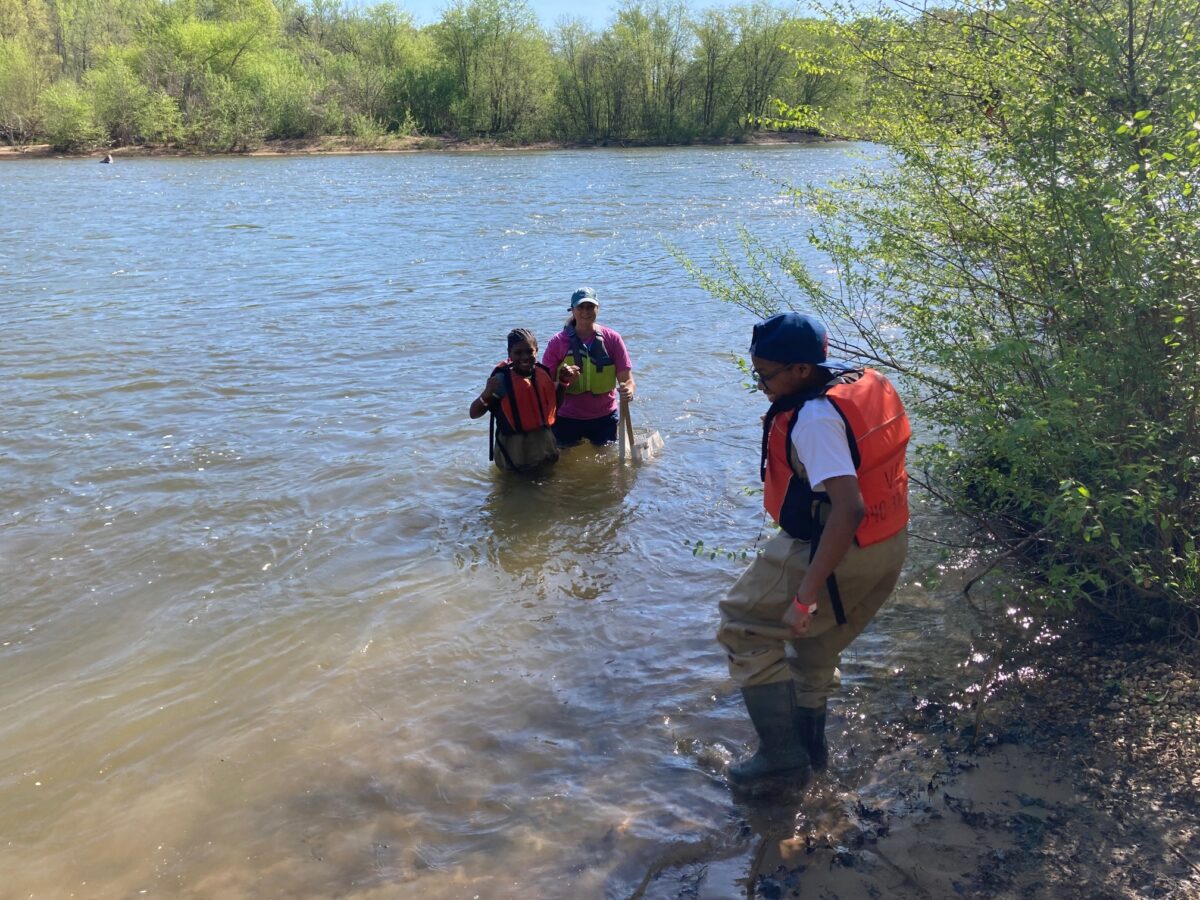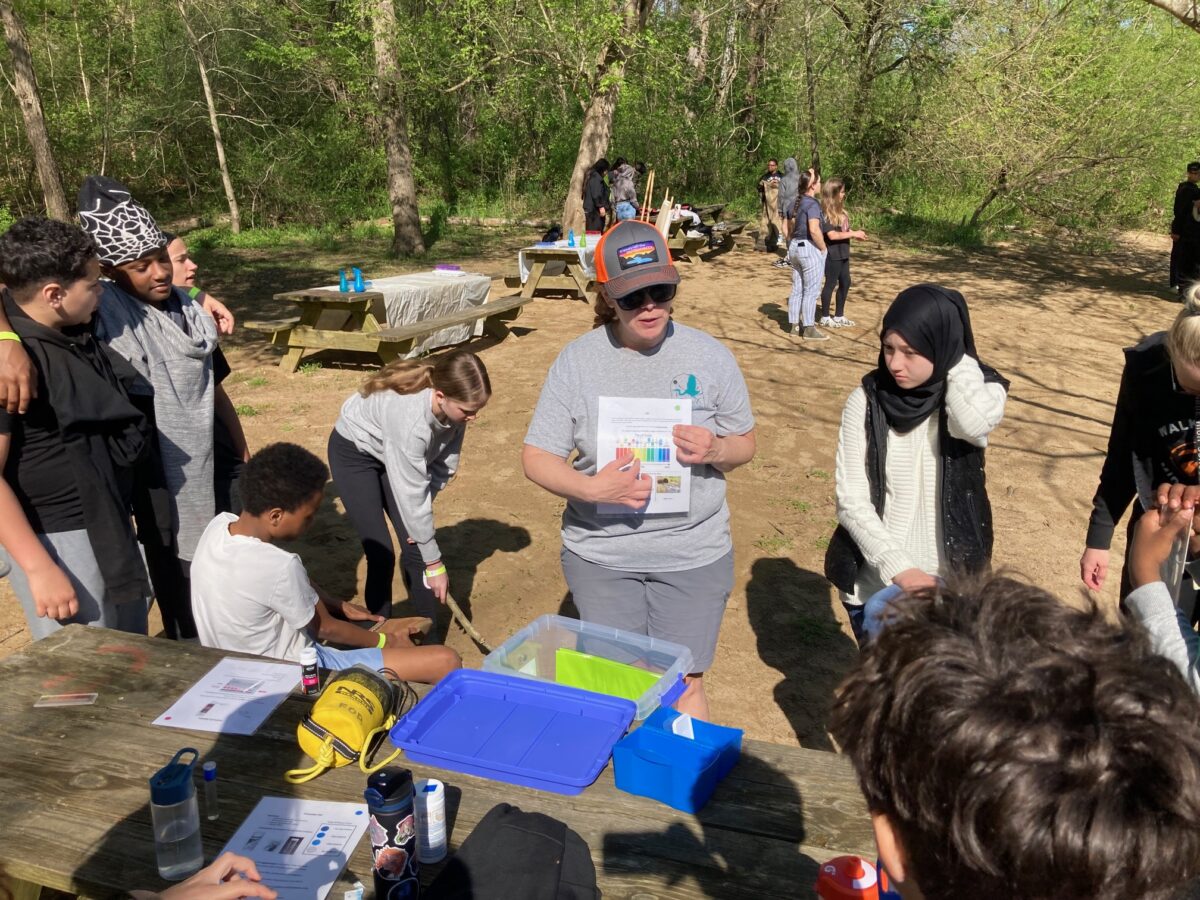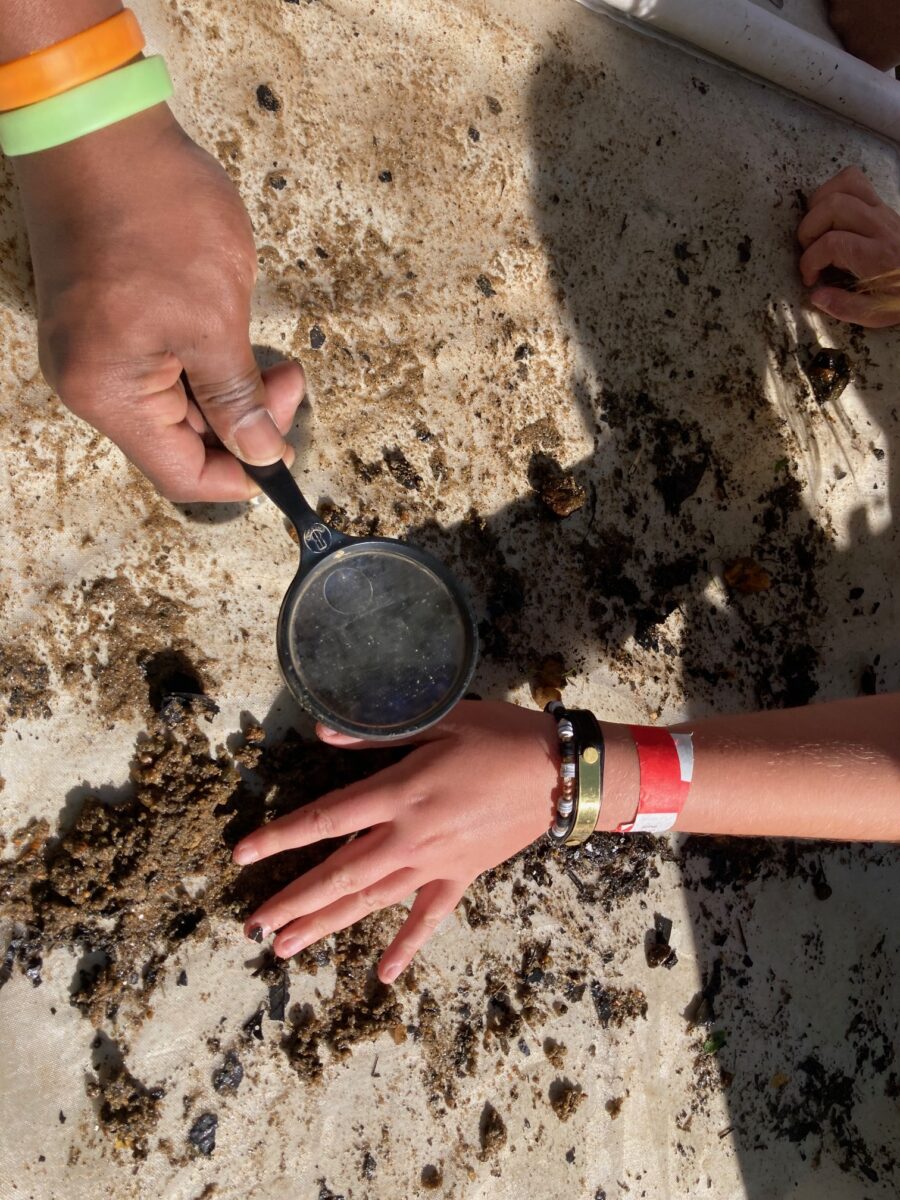
Turbidity was the word of the day for 6th grade students at Walker-Grant Middle School.
It’s a measure of the relative clarity of a liquid, and this week, the students were determining the turbidity levels of the Rappahannock River.
Dirt and soil are the number one pollutants of our local river, Jennifer Gron, field trip manager for Friends of the Rappahannock, reminded the students.
“It washes into the river after a rainstorm like we just had,” Gron said. “We want low turbidity.”
To measure turbidity levels, the students collected a bucket of river water and poured it into a tall, clear plastic tube. The took turns peering down the tube, attempting to see the black-and-white disc positioned at the very bottom.
“If you can’t get a good view of the disk, that means if the water is as deep as this tube, sunlight is not getting to the bottom,” Gron said. “It is getting blocked by sediment in the water, and any plants that are trying to grow at the bottom are not getting sunlight.”
On Tuesday, the disk was partly visible, meaning the turbidity is “not bad,” she said.
All 6th graders at Walker-Grant Middle School in Fredericksburg visited Friends of the Rappahannock this week for an outdoor field experience designed to get them “up and close” to the river.
“The goal is for them to learn more about the river and increase their environmental literacy,” Gron explained. “They’ll learn how their daily activities impact the river and hopefully, that will inspire them to mitigate those activities.”
In 2022, FOR received a $236,000, three-year grant from the National Oceanic and Atmospheric Administration to fund watershed education experiences for 4th, 6th, and 9th graders in Fredericksburg City Public Schools.
Funded by the grant, FOR last year began bringing Meaningful Watershed Education Experiences to city students. These immersive investigations into local environmental issues, of which this week’s field trips are an example, are required by states that participate in the 2014 Chesapeake Bay Watershed Agreement.
Last year’s programming was for 9th graders. This year, programming expanded to include 6th graders, and 4th graders will be included next year, Gron said.
On Tuesday, in addition to testing turbidity levels, the students tested the pH and oxygen levels and the temperature of the water.
“Why do we care about the temperature?” Gron asked. “When the temperature increases, it holds less oxygen, and that creates dead zones.”
They also donned waders and ventured deeper into the river to collect soil from the bottom, which they combed through with tweezers and a magnifying glass, looking for small invertebrates such as mayflies, snails and crayfish.
These creatures are examples of benthic macroinvertebrates. They are sensitive to pollution and as such are important water quality indicators.
On Tuesday, students found spiders, scuds, crayfish, and aquatic worms. They also measured a pH level of 7—in the normal range—and a temperature of about 65 degrees.
Their conclusion? Our river is in pretty good health—at least for today.











